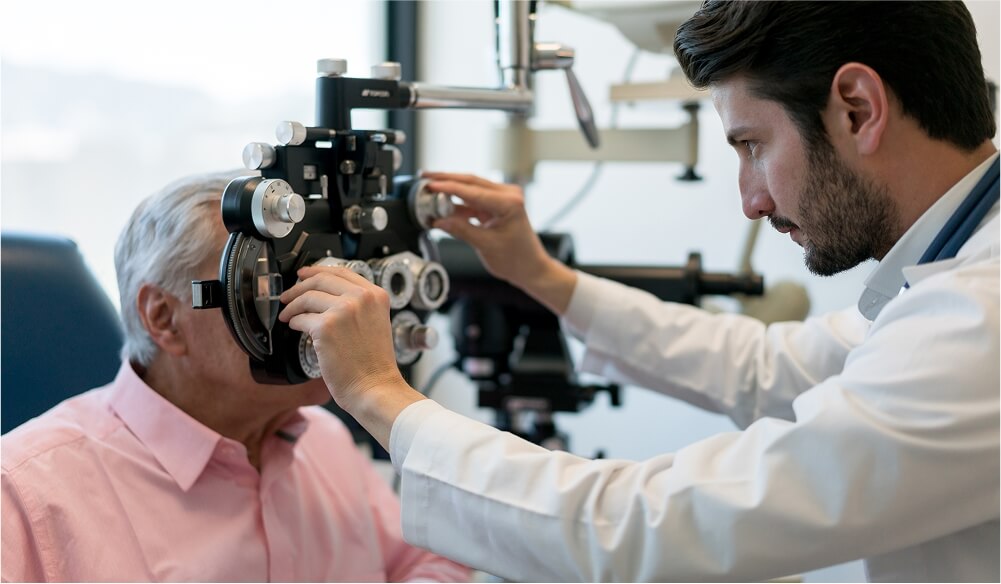Why LATAM is ophthalmology's best-kept secret for clinical trials
While ophthalmology sponsors scramble for patients in saturated markets, Latin America is quietly becoming a compelling region for ophthalmology clinical trials. In our recent ophthalmology webinar, leading voices in the ocular arena revealed why now is the moment to tap into LATAM's untapped potential.
For years, sponsors treated LATAM as a backup plan. What we're showing them now is that it should be part of the primary strategy. The region offers something rare in today's clinical research environment: stability, diversity, and site capability without the intense patient competition that slows trials elsewhere. That's a combination worth building your program around.
Therapeutic Strategy Head, Ophthalmology and Neuroscience, Fortrea
The perfect storm of opportunity
Picture this: a region with 213 million people in Brazil alone1, exceptional patient diversity, proven site infrastructure, improving regulatory start-up timelines, and—here's the critical part— according to our webinar speakers less patient competition than the US or Europe. That's the LATAM advantage right now.
Dr. Patricio Schlottmann, a renowned retina specialist and principal investigator in Argentina, opened our discussion with a compelling case: while Eastern Europe faces volatility and APAC regions navigate complex tax incentives, LATAM offers stability and cost-effectiveness that makes it increasingly attractive to sponsors. The numbers back this up—LATAM consistently shows the lowest non-enrolling site rates across Fortrea's global portfolio2.
Beyond recruitment: LATAM's diversity advantage
When Leandro Reis Tavares, Executive Vice President at IDOR and Rede D'Or São Luiz, described Brazil's healthcare landscape, something became clear: this isn't just about patient numbers. The genetic diversity within LATAM populations—influenced by European heritage but distinct in disease presentation—creates unique opportunities for inclusive trial design. For conditions like macular degeneration, LATAM offers patient populations that can strengthen your data while meeting diversity requirements that challenge US and EU sites.
But what about those regulatory concerns you've heard about? The landscape is shifting. New legislation to improve the start-up processes and financial transparency are reducing barriers that once made sponsors hesitate. Brazil's universal healthcare system, combined with private infrastructure, creates pathways that transform clinical trials from research studies into genuine care options for patients who might otherwise lack access to cutting-edge treatments.
Clinical trials as care pathways
This care pathway dimension is critical to understanding LATAM's appeal. For many patients across the region, participating in clinical trials represents their primary access to advanced ophthalmology treatments. This reality creates a powerful dynamic: patients are motivated, sites understand the importance of their role in delivering care, and communities view trial participation positively rather than with skepticism.
IDOR's patient data lake exemplifies this approach in action. By using AI and EMR technologies to identify eligible patients across their network, they're not just filling enrollment targets—they're connecting patients to treatments they need. This care-first mentality, embedded in LATAM's healthcare culture, makes it an ideal environment for running trials that require committed, engaged patients.
What makes a site truly trial-ready
Here's where ophthalmology gets complex. You need sophisticated imaging equipment, experienced investigators, and CRAs who understand both the technology and the therapeutic area. Teresa Barros, Fortrea's Senior Clinical Research Associate with deep LATAM experience, emphasized a crucial point: discovering and validating the right sites requires people on the ground who know what to look for.
The good news? Networks like Dr. Schlottmann's site consortium in Argentina demonstrate that trial-ready infrastructure exists—sites that have passed regulatory inspections and sponsor audits without issues. IDOR's patient data lake in Brazil takes this further, using AI and EMR technologies to identify and recruit patients who might be missed through traditional screening approaches.
The site-CRO-sponsor collaboration triangle
Perhaps the most powerful insight from our panel: successful LATAM trials aren't built on contracts alone. They're built on relationships. When sponsors, CROs, and sites communicate openly and resolve issues collaboratively and transparently —without layers of bureaucracy—trials move faster and deliver better results.
Your window is now
This convergence of factors—proven sites, available technology, economic stability, and crucially, lower patient competition—creates what Dr. Schlottmann calls a "peak time" for ophthalmology trials in LATAM. But windows don't stay open forever.
Whether you're actively evaluating LATAM or just beginning to consider it, our webinar panel provided actionable insights on site selection, regulatory navigation, patient identification, and relationship models that work.
Ready to explore how LATAM can accelerate your ophthalmology program? Watch the full webinar on-demand and get in touch with our Ophthalomogy team to explore your opportunities
References
- 1. Country's estimated population reaches 213.4 million residents in 2025. https://agenciadenoticias.ibge.gov.br/en/agencia-news/2184-news-agency/news/44318-populacao-estimada-do-pais-chega-a-213-4-milhoes-de-habitantes-em-2026. Last updated July 2025. Last accessed October 2025
- 2. Based on Fortrea’s internal data and analysis. Last accessed October 2025
